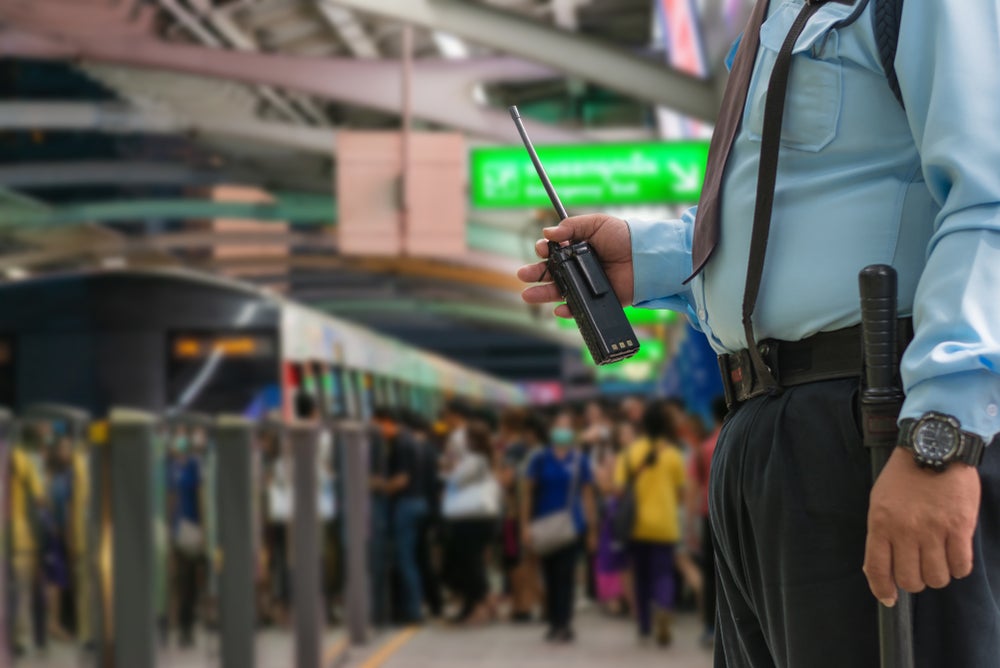According to the UK Office of Rail and Road (ORR), over 1.6 billion passenger rail journeys were made between April 2023 and April 2024. With millions of people using train networks each year, the safety and security of every station, train, and track must be a priority.
This is especially true given that the threats that the rail industry faces are rising. From increasing incidents of violence against rail workers – over 4,000 attacks were recorded at railway stations across the UK last year according to a report by the BBC – to the growing threat of vandalism and terrorism.

Security varies between international and national rail in terms of the threats faced, but across the industry, there has been a necessary shift towards a technology-centred approach to face evolving threats.
Staying one step ahead
Passengers will be familiar with security measures they see at every train station, such as ticket barriers or CCTV, and X-ray baggage scanning at international rail stations. But a further hidden security intervention has been established thanks to intelligent data technology, to help stay one step ahead of risks.
Digital reporting has made it easier and quicker to record incidents and ensures that the information is securely stored should it be necessary for evidence. But it also means that trends can be identified.
For example, through new software, security officers can log detailed information on incidents in just a few clicks through a handheld device. Similarly, colleagues can keep a digital log of the time and date of security checks onboard trains alongside any suspicious items or behaviour noticed, before, of course, investigating this further.
Security teams can access digital platforms that collect the data from the incident and train check reports to generate intelligence on the threat level across different stations and regions. This means security teams can make intelligence-led decisions, such as deploying additional security officers on duty or additional measures, such as the number of onboard checks where there is higher risk, to ensure the safety of passengers and station teams.
Taking this one step further, intelligence analysts can use insights from security officers on the ground, as well as open-source data gathering, such as social media and news sources, to assess changes in threat levels. They act as the ‘eyes above the ground’, alerting security teams to events that could impact risk, such as a major football match or protests close to a train route, working with security officers and the police to be prepared.
A multi-layered approach to cross-border security
International railways have their own set of challenges when it comes to security. With national security at play, the same due diligence is needed as an international airport. Yet, unlike in aviation, the full security check is delivered within a space the length of a swimming pool and passengers can take as much luggage as they like.
Mitie has worked with Eurostar for 16 years and is responsible for the security at St Pancras International Station, which sees 10 million people travelling between London and mainland Europe each year.
With threats to national security increasing in that time, including the threat of terrorism, the technology involved in security checks has evolved. As well as the intelligent data technology introduced by Mitie, the security hall has welcomed e-gates and explosive detection systems.
As technology has become a more significant part of security checks, the expertise of security professionals has equally become increasingly important, particularly given the unique requirements of international railway security. Security professionals ensure that technology can do a thorough job by managing queues and ensuring that the integration of new technology is seamless. Security will always rely on human intuition to detect suspicious behaviour and items and provide reassurance to passengers.
For example, our colleagues are attuned to the fact that the number of trays that passengers require for scanning changes seasonally, as the weight of items increases for the colder months so can adjust the queuing system for X-ray baggage checks accordingly.
More down the track
With so many passengers from all over the world passing through the station, we’ve also introduced a ‘concierge-style’ security role to support the queueing system. This human touch creates a more positive experience for passengers while ensuring that the flow of people passing through the technology-based security checks is balanced to achieve both speed and accuracy.
Ultimately, the combination of innovative technology and the expertise of security officers will always be the best approach to deliver ultimate protection against security risks.
Passengers only see a fraction of the security measures we’re using to keep them safe. We’re always trialling new technology and taking inspiration from other sectors to apply to the rail industry – threats are evolving and so must we.
With the rail and security industries working together to champion innovation and ensure people have the skills to work alongside the latest technology we can continue to keep passengers safe across the rail network.




